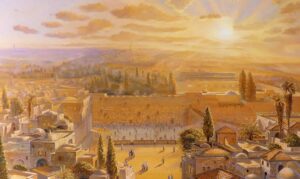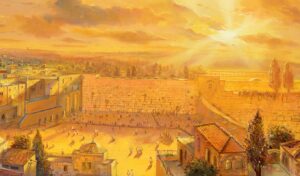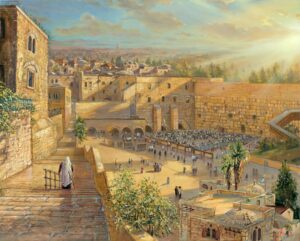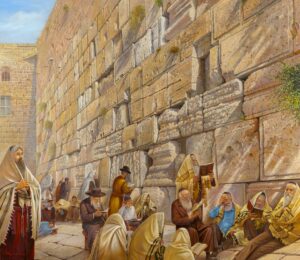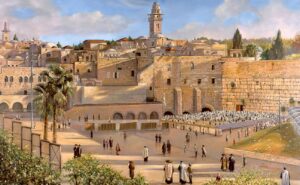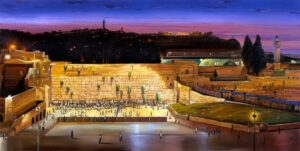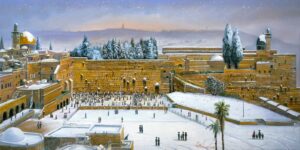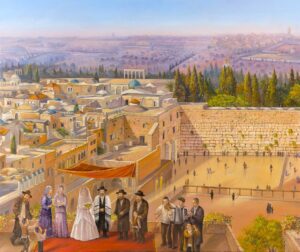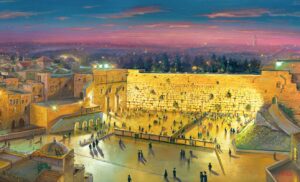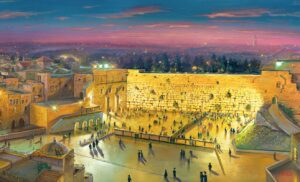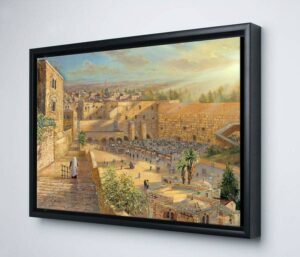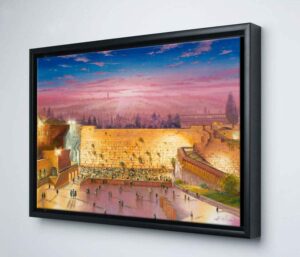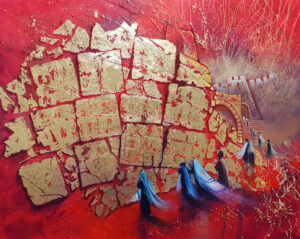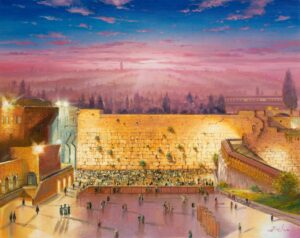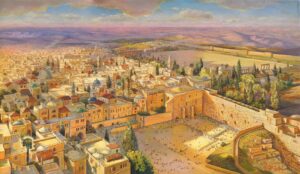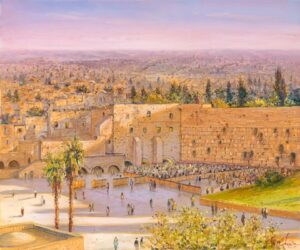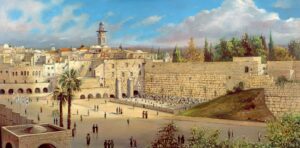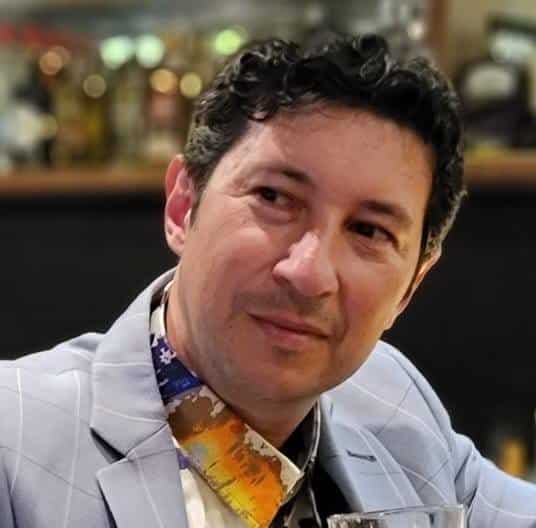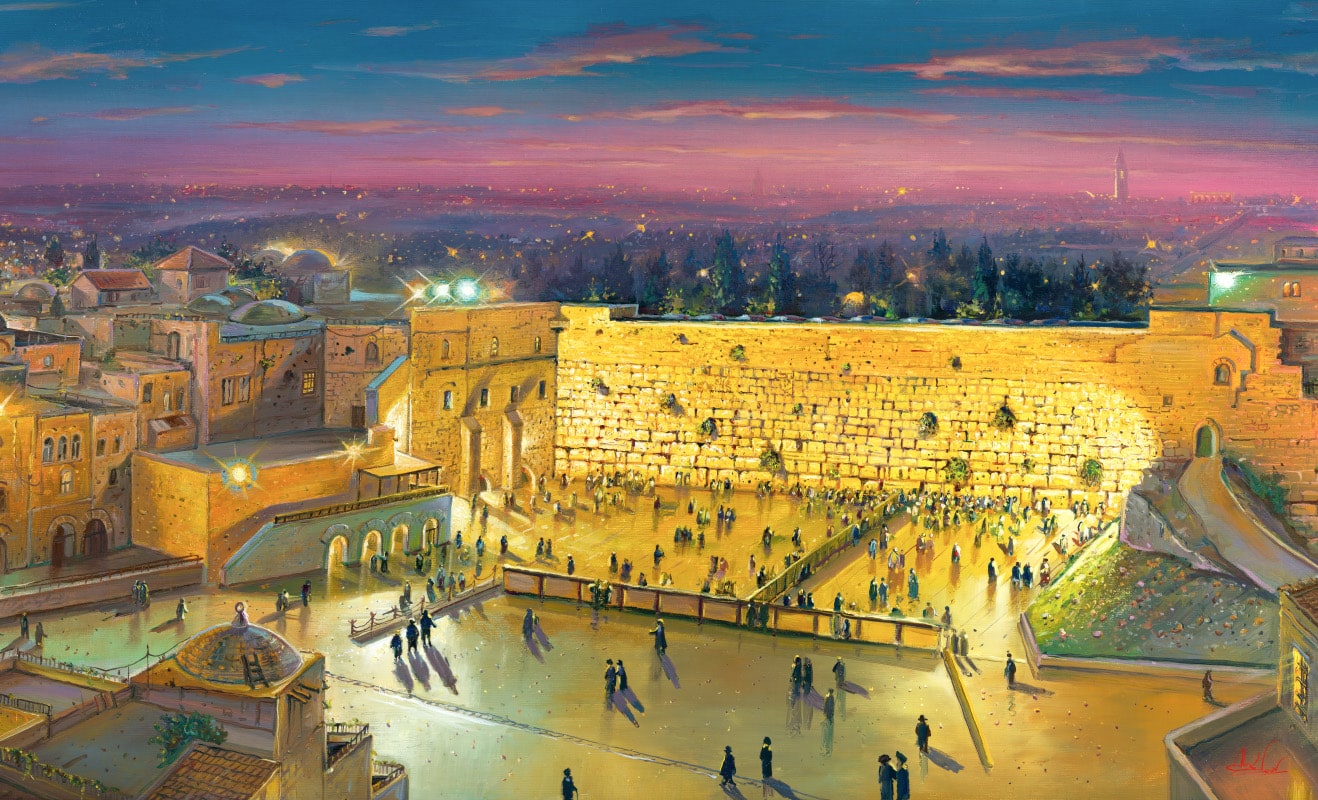
The Kotel, also known as the Western Wall, is one of the most significant religious and cultural landmarks in the world. Located in the heart of the Old City of Jerusalem, the Kotel is the last remaining wall of the Second Jewish Temple, which was destroyed by the Romans in 70 CE. For Jews, it is the holiest site where they can pray, and for many others, it symbolizes resilience, faith, and a deep connection to the ancient past.
The Kotel is not just a physical structure but a powerful spiritual and emotional symbol. For centuries, Jews from all over the world have journeyed to Jerusalem to pray at the wall, expressing their hopes, sorrows, and dreams. It has earned the title “the Wailing Wall” due to the tradition of weeping and mourning the destruction of the Temple. Pilgrims and visitors alike tuck handwritten prayers into the cracks between its massive stones, believing that their words will ascend to the heavens.
Historically, the Kotel represents the enduring connection of the Jewish people to Jerusalem, a city that has been central to their identity for thousands of years. Despite the many conquests, exiles, and adversities that the Jewish people faced, the Kotel has stood as a symbol of survival and continuity. In the modern era, it has also become a place of national pride, particularly after the Six-Day War in 1967, when Israel regained control of the Old City and access to the wall was restored.
The experience of visiting the Kotel is unique for every individual. For some, it is a deeply religious act of connecting with God, while for others, it is a moment of reflection and connection to Jewish history. The wall, with its towering stones, exudes a sense of timelessness, and the plaza in front of it is filled with people of all backgrounds, from devout religious Jews to tourists from around the world, all drawn by the spiritual energy of the place.
In recent years, the Kotel has also been a site of social and political discussions, particularly about the inclusion of different Jewish denominations. There have been calls for creating more inclusive spaces at the wall for women and non-Orthodox Jews, reflecting the evolving relationship between tradition and modern values.
Regardless of one’s religious beliefs or background, the Kotel stands as a universal symbol of faith, endurance, and the longing for peace. It is a place where the past, present, and future meet, offering a sense of hope and continuity in an ever-changing world.
הכותל: סמל לאמונה והיסטוריה
הכותל, המכונה גם הכותל המערבי, הוא אחד הסמלים הדתיים והתרבותיים החשובים ביותר בעולם. הכותל נמצא בלב העיר העתיקה של ירושלים, והוא הקיר האחרון שנותר מבית המקדש השני, שנהרס על ידי הרומאים בשנת 70 לספירה. עבור היהודים, הכותל הוא האתר הקדוש ביותר בו הם יכולים להתפלל, ועבור רבים אחרים הוא מסמל חוסן, אמונה וחיבור עמוק לעבר העתיק.
הכותל הוא לא רק מבנה פיזי, אלא סמל רוחני ורגשי עוצמתי. במשך מאות שנים יהודים מכל רחבי העולם הגיעו לירושלים כדי להתפלל מול הכותל, ולהביע את תקוותיהם, צערם וחלומותיהם. הכותל קיבל את הכינוי “כותל הדמעות” בשל המסורת של בכי ואבל על חורבן המקדש. עולי רגל ומבקרים נוהגים לשים פתקים כתובים בין האבנים, מתוך אמונה שהמילים יעלו השמיימה.
היסטורית, הכותל מסמל את הקשר העמוק של העם היהודי לירושלים, עיר שהייתה מרכזית לזהותם במשך אלפי שנים. למרות כיבושים, גלות וקשיים רבים שעברו על העם היהודי, הכותל עומד כסמל להישרדות והמשכיות. בעידן המודרני, הכותל גם הפך לסמל לגאווה לאומית, במיוחד לאחר מלחמת ששת הימים בשנת 1967, כשהשליטה בעיר העתיקה והגישה לכותל הושבה.
החוויה של ביקור בכותל היא ייחודית לכל אדם. עבור חלק זהו מעשה דתי עמוק של חיבור עם אלוהים, ועבור אחרים זהו רגע של הרהור וחיבור להיסטוריה היהודית. הכותל, עם האבנים הגבוהות שלו, מקרין תחושת נצח, והרחבה שלפניו מלאה באנשים מכל רקע – יהודים דתיים אדוקים ועד תיירים מרחבי העולם – כולם נמשכים לאנרגיה הרוחנית של המקום.
בשנים האחרונות, הכותל גם הפך למקום לדיונים חברתיים ופוליטיים, במיוחד בנוגע לשילוב זרמים שונים ביהדות. יש קריאות להרחיב את השטחים המאפשרים תפילה לנשים ולקבוצות יהודיות לא אורתודוקסיות, המשקפות את הקשר המתפתח בין מסורת לערכים מודרניים.
ללא קשר לאמונה או הרקע של כל אחד, הכותל ניצב כסמל אוניברסלי לאמונה, חוסן והכמיהה לשלום. זהו מקום בו העבר, ההווה והעתיד נפגשים, ומציעים תחושת תקווה והמשכיות בעולם המשתנה.

